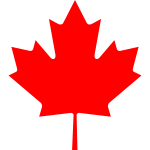Kinds Of Graphs And Charts
Earlier, it was starting and the pioneer was mathematics, wherein various kinds of graphs and charts are considered as the representation of a set of objects where few pairs of the objects are interconnected to each other by links. The objects that are interconnected are represented by graphs. Graphs are the pictorial formats that help for easy understanding of any large data. In general, the pictorial representations are always opted by the students and all most all the academicians. What do the people signify by pictorial representation? If one needs to understand what the picture representation is, one need to realize a lot of things. There is a very vintage assumption that a trustworthy image of an object is one that resembles the object, or is alike to it. There is furthermore a very old idea that the resemblance of an image to its object is explained by a point-to-point projective correspondence between them. This latter is nearly associated to the assumption that the retinal likeness is a picture of the object, in agreement with the still present and accepted theory of likeness optics that arises from Kepler. And, eventually there is the assumption that the idea of an object, which depends upon a different sort of projection of the retinal image to the mind, has the identical relation to the object that a picture does.
Line graphs:
These are one among the kinds of graphs and charts, which compare two variables. Each of the variables is plotted along an axis. A line graph has an upright axis and a level axis. So, for demonstration, if anyone wanted to graph the size of a ball after he or she has hurled it, one could put time along the level, or x-axis, and height along the upright, or y-axis. Line graph is the most unquestionable of all the graphs that are utilized in contriving tendencies relationships between two series of facts and figures. It is used when there is a substantial number of facts and figures to be contrived and if these facts and figures are continuous.
Bar graphs:
Bar graphs are one of the simplest forms of all the graphs to read. They are comprised either by upright or level bars. The lengths of the bars represent an allowance or percentage facts and figures. It is best when number of standards to be contrasted is little.
Circle graphs:
Circle graphs are otherwise known as pie graphs. The circle graphs are represented by the parts of which are utilized to represent constituent constituents of a whole. They always present total allowances, their components or segments are calculated in percentage or fractional parts of an entire. A pie chart (or a round graph) is a circular journal split up into sectors, showing numerical percentage. In a pie journal, the arc extent of each part (and consequently its central bend and area), is proportional to the quantity it comprises. While it is entitled for its resemblance to a pie which has been dividing, there are variations on the way it can be presented.
Solid Graphs:
Locality or solid graphs generally used for the simplest quantitative evaluation through the use of geometric forms. It is utilized to compare two or three associated sums.
Pictorial statistics or images:
These things make use of associated images in displaying quantitative data. Pictures give realism and interest, so it is broadly utilized especially in the elementary grades.






